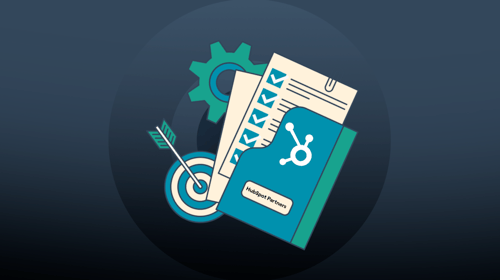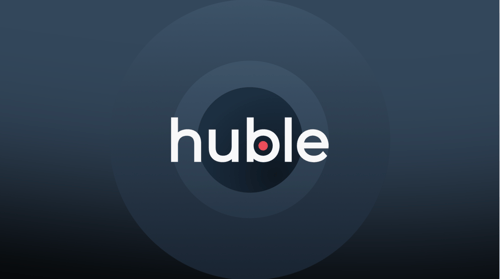Voice search and the future of content marketing
So far, Inbound this year has focused heavily on how the world of SEO (Search Engine Optimisation) is changing. Dan Golden, chief search artist and co-founder of BeFoundOnline, ran a talk this morning on Voice Search and how it is changing the way consumers interact with brands.
Interestingly, this was also the focus of a HubSpot talk I attended during Partner Day where HubSpot introduced its new Content Strategy tool. Up until Monday, I had thought that Voice Search was purely related to how the SEO and PPC (Pay-per-click) landscape is changing.
I attended a few talks on Voice Search at Inbound last year, and I was captivated by how cool the technology was and how it felt like a step towards us living in a world where robots and hovering cars were no longer the stuff of fantasy. I hadn’t made the link back to the impact it was going to have on me and the content-driven, Inbound Marketing campaigns my team and I run on behalf of our clients.
I thought Voice Search was literally that; us using our voice to search for things – and that this trend was driven by the release of Amazon Echo, Google Home and others. But I was wrong. It applies to a far broader change in the way we search for things today, and not just with our voice.
Remember when we had to find the perfect combination of words, interspersed with the use of colons and speech marks? We no longer play the game of keywords when trying to search for things on Google. The way we search today is far more true to the way we speak and Google is evolving to suit.
But why is this relevant to the type of content we generate as Inbound marketers? How does this influence the way we write our blogs and eBooks for example?
As Google updates its algorithm to become more intuitive, propelled by the way people are now searching, we as marketers have an opportunity to change the way we structure and draft our content. Optimisation is becoming more authentic. Google is getting to a point where it can understand topics and content on a much deeper level so that it can return the right results when we ask, ‘Ok Google, what do I need to do to improve my blog post?”
But what does this mean in practical terms?
What will content marketing be like in the future?
As I mentioned previously, HubSpot very recently launched a new tool called Content Strategy. It allows you to create ‘topic clusters’. These clusters are a series of topically related content intended to build authority and influence around a specific topic, improving your ranking on search engines and helping prospects to find your content. Within your topic cluster, you have one piece of pillar content and 5-10 cluster topics. For example, your pillar page might be HubSpot – and around that pillar page, you would have cluster topics relating to the things that HubSpot provides, such as HubSpot Support, Onboarding, Training and others. (You can find out more about HubSpot’s Content Strategy tool here.)
The most controversial element of this new strategy is that a pillar page is effectively an eBook but laid out as a webpage. You have a central topic that links to – and discusses – a number of specific sub topics – remind you of anything? Pillar pages should educate your audience on a particular topic, and, for best practice, should be a few thousand words, have multiple calls-to-action and include a combination of different types of media. These pages then cross-link to your subtopics.
The reason this was a controversial idea is that it effectively means “un-gating” your eBooks (or what could have been eBooks, but are now topic clusters). The very thing I advise my clients not to do on a regular basis. So, of course, my first question was: how do we capture lead data if all of our eBooks are freely available as webpages?
The answer? You only apply this method to your awareness stage assets and you place CTAs to consideration stage or MOFU (middle-of-the-funnel) content items throughout your pillar page. HubSpot described it as ‘widening the top of the funnel’. The other recommendation is to ensure that the content is still available to download as a PDF, so that people have the opportunity to save the content and read it later. Another great piece of advice was to start with eBooks that aren’t performing very well.
So, here are my suggested steps for getting started with topic clusters and using HubSpot’s Content Strategy tool:
Dig out your buyer personas (or if you don’t have any, research them!)
Now I should hope you don’t have to dig far for these. Your buyer personas are the foundation of your Inbound campaign(s), so you should always be referencing them. Whether you’re creating content, building CTAs, or planning workflows, your personas should be at the heart of your thinking. HubSpot have a great tool to help you develop your personas if you don’t have them already:
http://www.makemypersona.com/.
Identify their pain points
One of the most important outputs of researching your buyer personas is understanding their pain points. These can form a great basis for your content and messaging. They should be the typical challenges your buyer personas face on a day to day basis and want to find a solution to.
Group the pain points into topics
From the pain points you’ve identified via your buyer persona research, find the common topics that unite them. For example, your personas might have the following problems:
-
My website isn’t generating enough leads for my sales reps
-
I am not seeing any results from cold calling anymore
-
I have a goal of achieving 20% growth in the next quarter and I’m concerned about my strategy
These problems could be grouped into the topic of Lead Generation.
Now map out your content ideas
Take the topics you’ve identified and, using keyword research, identify subtopic content that relates to the topics you’ve identified. Your subtopics should be closely related but not exactly match the main topic. So, if your pillar content is around Lead Generation, you could create blog posts like ‘5 tools to use to generate more leads from your website’ or ‘The top performing forms you need to add to your website now!’
Create your topic clusters
You now have everything you need to begin planning and building out your topic clusters. Add these into your content plan, build them out in HubSpot and monitor the results. Read our blog on the Content Strategy tool and how to build out topic clusters in HubSpot here.
There are some great pillar page templates available here if you’re in need of some inspiration: http://designers.hubspot.com/inspire.










-3.png?width=500&height=320&name=Matt%20-%20imagery%20bank%20(8)-3.png)

